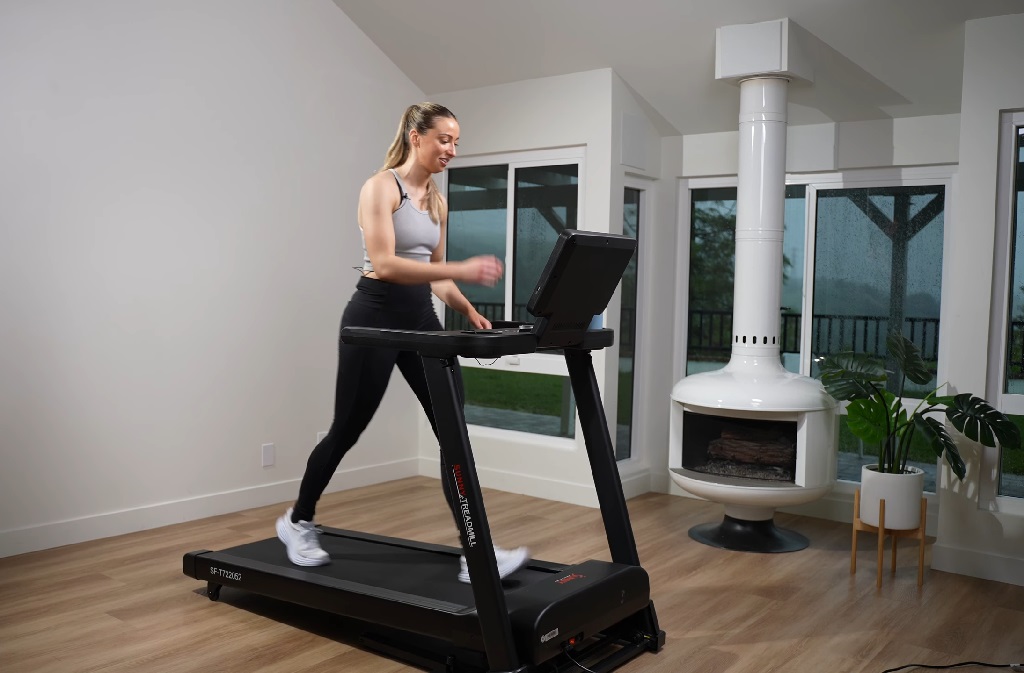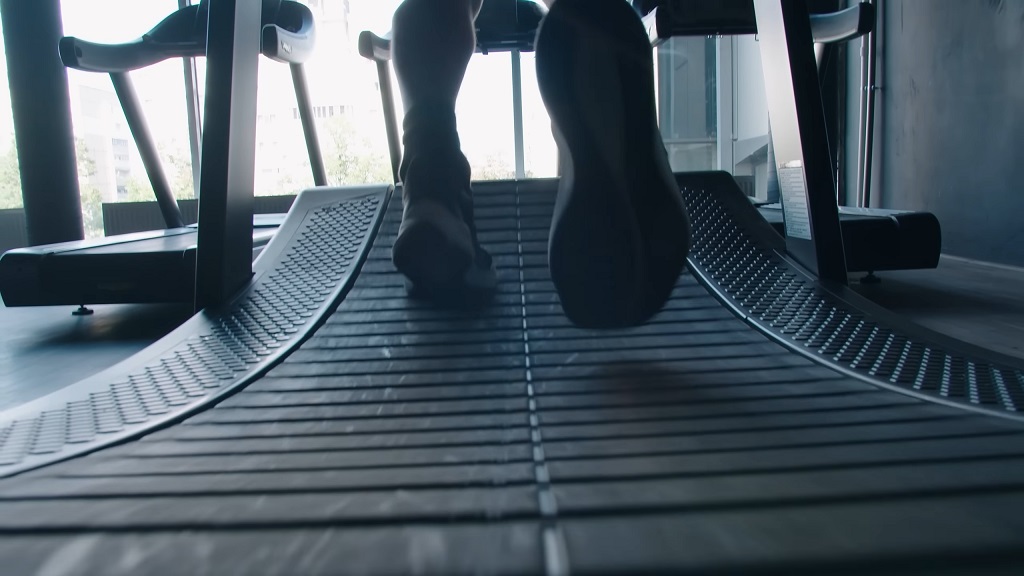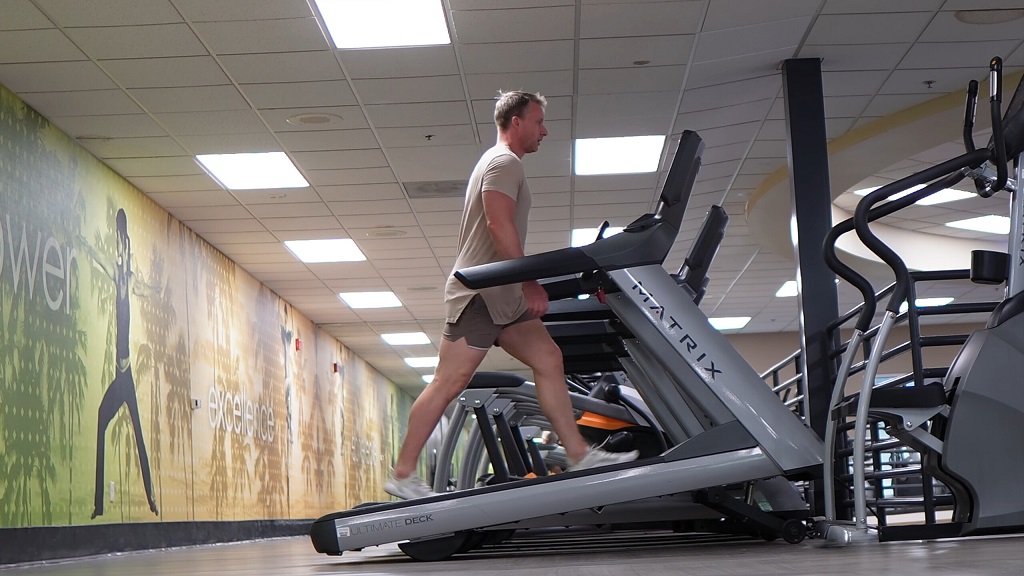Weight loss comes down to burning calories, but not every workout feels right for everyone. Running is quick and burns more calories fast, but it can be tough on your joints. Incline walking is slower and easier, but it still gets results if done consistently.
Figuring out which works better depends on your body, your goals, and what you can stick with. Let’s get into what makes each one worth considering.
Key Takeaways
- Running burns more calories in less time. It’s ideal for quick results if you have the stamina for it.
- Incline walking is gentler on the joints, making it better for those with joint issues or seeking a sustainable workout over time.
- Both exercises strengthen the lower body, but incline walking puts more emphasis on the glutes and hamstrings.
- Incline walking is easier to stick with long-term, while running might cause injuries if overdone or if you have pre-existing joint issues.
How Incline Walking Help with Weight Loss?

Incline walking burns more calories than flat walking because it engages larger muscles like the glutes and hamstrings.
According to Sole Fitness, “If you weigh 150 pounds, walking at 4 mph on a flat surface burns around 270 calories per hour. On a 10% incline, the same person can burn over 500 calories per hour.”
Walking uphill is low-impact, so it’s gentler on the joints compared to running. For those with joint pain or who prefer a less intense workout, incline walking provides a solid cardio workout that can be done consistently.
Incline walking also has mental health benefits. It reduces stress, boosts mood, and improves overall fitness. It’s a manageable exercise that supports long-term weight loss, helping people stay consistent.
In short, incline walking is an effective way to burn calories, build muscle, and improve health without putting stress on the joints. It’s a sustainable option for weight loss.
How Does Running Helps with Weight Loss?

Running is one of the most efficient ways to burn calories. It’s high intensity and burns more calories in less time than walking.
For example, a 160-pound person running at 6 mph can burn around 720 calories per hour. That’s significantly higher than what’s burned during walking, including incline walking.
But the diet is also a huge factor here.
Experts from Livestrong state, “If you don’t change your diet and jog two miles per day at a five-mile-per-hour pace, it will take about 12 to 18 days to lose one pound. However, if you reduce your calorie intake by 300 calories per day and continue jogging those two miles, you can lose one pound per week.”
Running engages multiple muscle groups, primarily the legs, and helps build endurance. It also strengthens bones and improves cardiovascular health. As a weight-bearing exercise, running boosts metabolism and accelerates fat loss, especially when combined with interval training or sprints.
Running also releases endorphins, which improve mood and reduce stress. It’s a quick, effective way to stay fit, but it can be tough on the joints, particularly for those with pre-existing issues. Despite this, it remains a top choice for people looking to burn calories fast and improve their overall fitness.
Cold Showers and Cold Plunges are perfect solutions to recover after an intense workout.
Let’s Compare Them
When choosing between incline walking and running for weight loss, it’s important to look at key factors like calorie burn, joint impact, muscle engagement, and sustainability.
Here’s a detailed comparison to help you decide which workout might suit your needs better:
| Factor | Incline Walking | Running |
|---|---|---|
| Calorie Burn | Burns around 500 calories per hour (10% incline) | Burns around 720 calories per hour (6 mph pace) |
| Impact on Joints | Low impact, easier on joints | Higher impact, can strain joints |
| Muscle Engagement | Targets glutes, hamstrings, quads | Engages full lower body, focuses on endurance |
| Sustainability | Easier on the body, can be done consistently | Can lead to burnout or injury, harder to sustain |
| Cardiovascular Benefits | Moderate, still improves heart health | High, excellent for cardiovascular fitness |
| Time Efficiency | Slower calorie burn, requires longer sessions | Faster calorie burn, shorter sessions |
What About the Joint Impact?

Incline walking and running affect the joints in very different ways.
Incline walking is a low-impact activity. It places less stress on the knees, hips, and ankles compared to running. This makes it a better option for individuals with joint pain or those recovering from injuries. The incline increases intensity without straining the joints, allowing for longer workouts without the same risks as running.
A study from Ball State University reveals that “Incline walking on a treadmill can benefit people with knee osteoarthritis or knee replacements. It reduces stress on the knee joint while strengthening lower limb muscles, making it an ideal exercise for those with knee problems.”
Running, however, is high-impact. It places more stress on the joints with each stride. While running helps burn calories quickly, the repetitive pounding on hard surfaces can lead to injuries like shin splints, knee pain, and stress fractures. Over time, this constant impact can wear down the joints, which may make running less sustainable for some people.
For anyone concerned with joint health, incline walking offers a safer option. Running can still be beneficial, but proper form, good footwear, and recovery time are essential to reduce the risk of joint damage.
Proper Diet for Weight Loss in Combination with Incline Walking and Running
Losing weight isn’t just about exercise. You need the right diet to make it happen. If you’re combining incline walking or running with your routine, diet plays a big role in getting results.
Without the right fuel and a calorie deficit, fat loss just won’t happen.
What You Need to Know

- Calorie Deficit: You need to burn more calories than you eat. Aim for a 500-calorie deficit per day. That’s about 1 pound of weight loss per week. It doesn’t happen overnight, but it works if you stick with it.
- Protein: Protein is key. It helps preserve muscle when you’re losing fat and supports recovery after your workouts. Get about 1.2–2.0 grams of protein per kilogram of body weight each day.
- Carbs: Carbs get a bad rap, but you need them. They fuel your workouts. Stick with whole grains, veggies, and fruits. They’ll fill you up and prevent you from overeating.
- Healthy Fats: Don’t cut out fat completely. Go for healthy fats like those from nuts, seeds, and olive oil. They keep you satisfied and support overall health.
- Water: Don’t forget to hydrate. Drinking water helps your metabolism and makes sure you don’t confuse thirst with hunger.
Example of What a Day Should Look Like
Here’s a simple daily meal plan that works if you want to lose weight while doing incline walking or running:
- Breakfast: 3 scrambled eggs, 1 slice of whole-grain toast, 1 apple (350 calories)
- Snack: Greek yogurt with chia seeds (150 calories)
- Lunch: Grilled chicken breast, quinoa, salad with mixed greens (450 calories)
- Snack: A handful of almonds (200 calories)
- Dinner: Baked salmon, broccoli, and sweet potato (500 calories)
This comes to around 1650 calories, which leaves room for a healthy calorie deficit based on your activity level.
Why Diet and Exercise Work Best Together
Exercise burns calories, but it’s the diet that helps create a calorie deficit. If you don’t eat less than you burn, weight loss won’t happen. Running or incline walking will help, but you need the right diet to make it work in the long run.
Protein is your friend because it helps keep muscle while you lose fat. Muscle burns more calories at rest, so keeping it means your metabolism stays high. Plus, a balanced diet will give you the energy to push through your workouts, which means you’ll burn more calories in the long run.
FAQs
1. How many calories can I burn with incline walking for 30 minutes?
The number of calories burned during incline walking depends on your weight, walking speed, and incline. For example, a 160-pound person walking on a 10% incline at 4 mph can burn around 250-300 calories in 30 minutes. The steeper the incline, the higher the calorie burn.
2. Is running or incline walking better for toning legs?
Both running and incline walking tone the legs, but incline walking places more emphasis on building strength in the glutes, hamstrings, and quads due to the added incline. Running works the entire lower body, but incline walking is more focused on muscle building in the lower legs.
3. Can incline walking help with knee pain?
Yes, incline walking can help with knee pain. It’s a low-impact activity that places less strain on the knees compared to running. Studies have shown that incline walking can reduce stress on the knee joint while strengthening the muscles around it, making it beneficial for people with knee problems.
4. How fast do I need to run to lose weight?
To lose weight, running speed alone isn’t the only factor. However, running at a pace of 5-6 mph (about a 10-12 minute mile) is effective for burning calories. For weight loss, it’s important to maintain a consistent pace and combine running with a proper diet to create a calorie deficit.
5. What’s the best way to prevent injury while running?
To prevent injury while running, focus on proper form, wear the right running shoes, and gradually increase your running distance or intensity. Warm up before your run and cool down afterward. Rest and recovery are also essential to avoid overuse injuries, especially if you’re new to running.
6. How often should I do incline walking to see results?
For visible results, aim to do incline walking 3-5 times a week. Consistency is key. You should also combine it with a balanced diet to see the best results in fat loss and muscle tone. You can start with 20-30 minutes per session and gradually increase the duration or intensity as your fitness improves.
Conclusion
Both incline walking and running are great ways to lose weight and improve fitness.
Running burns more calories faster, but it can be tough on the joints.
Incline walking is easier on the body, especially for those with joint issues, and still helps burn calories and build muscle.
The best choice depends on your goals, fitness level, and what you can stick with long-term.
Combine either exercise with a proper diet, stay consistent, and you’ll see results.
